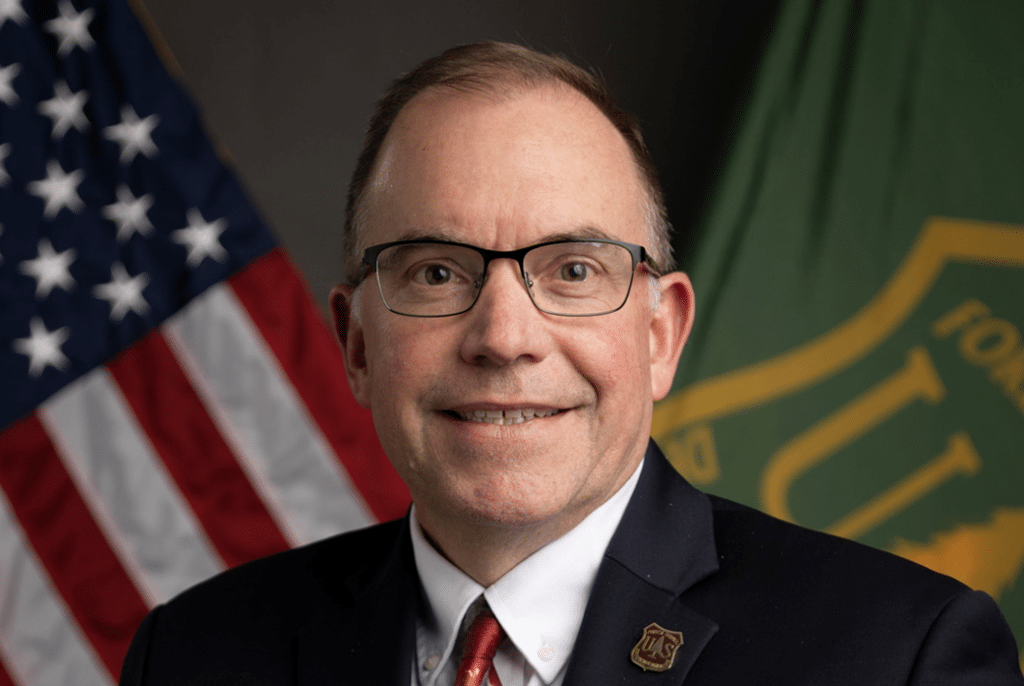
Chief Randy Moore, who announced his retirement as head of the U.S. Forest Service yesterday, previously worked on the Land and Resource Management Plan for the Superior National Forest (SNF). He is stepping down at a time when the agency faces significant budget reductions and job cuts. These challenges are a result of ongoing reorganization to streamline the government under the Trump administration.
Federal reorganization
After 45 years of service, Moore informed his employees in a letter that he’ll be retiring, effective March 3. In his message, he emphasized the agency’s role in providing jobs, goods, and services. He also highlighted the agency’s continued responsibility in protecting and stewarding natural spaces for enjoyment. Moore praised his team, saying, “You and the work you do are vital to the American way of life, and you are a valued employee who has performed admirably.”
Despite his pride in the agency’s work, Moore acknowledged the challenges he has faced, particularly in recent months. He said, “It’s been incredibly difficult” due to the job cuts that have impacted the entire agency.” Additionally, he noted that he was learning about the changes at the same time the employees were.
These changes come from current efforts to streamline the federal government. Through an initiative by the Trump administration, the Department of Government Efficiency (DOGE) was recently formed. Though the initiative’s legal status is unclear, President Trump signed an executive order to implement DOGE’s cost-cutting plan. It includes directives for federal agencies, including the USDA Forest Service. According to Reuters, the directive tasks agencies with “identifying mass layoff targets for restructuring plans due by March 13.”
Since the beginning of the year, the USDA has laid off around 3,400 employees—approximately 10% of the staff within the entire Forest Service.
According to an article from the The Star Tribune, dozens of federal employees across Minnesota have been impacted. Many described their recent terminations as “chaotic and said their departments were not informed of details of the layoff plans.” Although the SNF has not disclosed exactly how many jobs have been cut at this time, the agency was already struggling with staffing shortages under a reduced budget.
The USFS-Superior National Forest employs several hundred staff members. During the summer months, about 30 of them work in the Boundary Waters Canoe Area Wilderness (BWCAW). Their work includes checking permits and maintaining the extensive network of entry points, portage trails, and campsites.
Leadership transitions
Before becoming Chief, Moore served as a Regional Forester. From 2002-2007, he oversaw the Land and Resource Management Plan for the Superior National Forest (SNF), including the BWCAW. During his tenure, he was responsible for the Forest Service’s Eastern Region. Afterward, he became the Regional Forester for the Pacific Southwest, serving until 2021. Since then, Moore has guided an agency that manages 193 million acres of national forests and grasslands. He became the first African American to serve in this role.
Moving forward, Tom Schultz will take over as Chief of the USFS. He was named to the position by Secretary of Agriculture Brooke Rollins. Schultz, an Idaho resident, previously served as VP of Resources and Government Affairs at Idaho Forest Group, a privately owned timber industry company, and as Director of the Idaho Department of Lands. He earned a master’s degree in forestry from the University of Montana.

More info:
- A note of reflection – Chief Randy Moore
- US federal agencies directed to work with DOGE on mass layoff plans, memo shows – Reuters
- US Forest Service fires 3,400 workers, Park Service cuts 1,000 – Reuters
- Dozens of Minnesota federal workers fired in latest cuts, with no severance – The Minnesota Star Tribune
- Former Montana DNR Staffer and Air Force Officer Chosen as Next Forest Service Chief – Paddle & Portage

